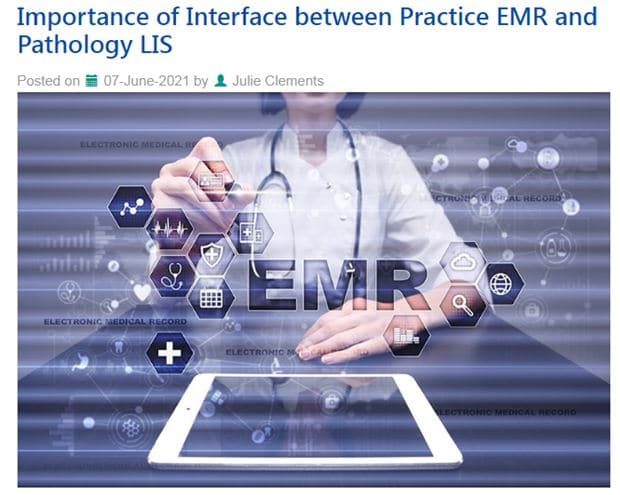 Flu levels remain elevated in the United States even during week 7 (February 11-17, 2018), according to the Centers for Disease Prevention and Control (CDC). National Center for Health Statistics (NCHS) mortality surveillance data available on February 22, 2018 indicate that 9.5% of the deaths that occurred during the week ending February 3, 2018 (week 5) were due to P&I (pneumonia and influenza). As healthcare providers struggle to manage the heavy flow of patients, medical transcription companies are doing their bit to help healthcare providers manage their EHR documentation tasks. A new study published in the Journal of General Internal Medicine found that computerized reminders promoting influenza vaccination for providers and patients can improve health outcomes.
Flu levels remain elevated in the United States even during week 7 (February 11-17, 2018), according to the Centers for Disease Prevention and Control (CDC). National Center for Health Statistics (NCHS) mortality surveillance data available on February 22, 2018 indicate that 9.5% of the deaths that occurred during the week ending February 3, 2018 (week 5) were due to P&I (pneumonia and influenza). As healthcare providers struggle to manage the heavy flow of patients, medical transcription companies are doing their bit to help healthcare providers manage their EHR documentation tasks. A new study published in the Journal of General Internal Medicine found that computerized reminders promoting influenza vaccination for providers and patients can improve health outcomes.
Symptoms of influenza include fever, cough, rhinitis, malaise, headache, and sore throat. The severity of influenza can range from mild illness to death. Vaccination is the best method for the prevention and control of influenza, and can reduce disease and lower severity of infection, especially in young children and the elderly who are at risk for complications. However, vaccination rates are substantially lower than targets, especially among older adults.
Encouraging older patients to adhere to the recommendations for influenza and pneumococcal vaccinations is a complex process. Patient behavior and decision making related to vaccination recommendations is influenced by various factors. A white paper by EHR company Practice Fusion notes that EHRs clearly have a potential role in influencing patients’ decision processes by providing prompts and reminders to patients and by promoting physician recommendations and patient-physician interactions, and thereby patient care.
Developed by the US Public Health Service, the Health Belief Model (HBM) is a widely used theory of individuals’ health behavior. It recognizes the significance of contextual or social factors, and internal and external cues to action which stimulate or trigger health-positive behaviors. Prompts and reminders from the health care system come under the category of external cues to action.
The objective of the Journal of General Internal Medicine published study was to assess the effectiveness of an EHR patient portal and IVR (interactive voice response) outreach to improve rates of influenza vaccination in a large multispecialty group practice in central Massachusetts. Up to 20,000 patients who had no influenza vaccination 2 months after the start of the 2014-2015 flu season were assigned to receive one of the following:
- A portal message promoting influenza vaccines
- An IVR call
- Both A and B
- Usual care
The patients received the portal message via a standard, basic e-mail that had no reference to personal information or vaccines. They were prompted to login to the secure portal, following which they clicked on a message labeled ‘Brief Flu Questionnaire’ to view.
Another 10,000 non-portal users were chosen at random to receive an IVR call or usual care. Each intervention arm received information about the pneumococcal vaccine as well if the patient was overdue for the vaccine.
Frequencies were calculated to assess the link between the intervention groups and completion of pneumococcal vaccine. Electronic health records (EHR) were used to verify influenza vaccination completions after the delivery of each communication.
For the portal users, the researchers found that EHR-documented influenza vaccines were received by:

- 14% (702/5,000) of message and IVR call recipients
- 4% (669/5,000) of message-only recipients
- 8% (642/5,000) of IVR call-only recipients, and
- 6% (582/5,000) of usual care recipients
Further, those receiving portal messages and IVR calls were more likely than the usual care group to be vaccinated.
For the non-portal users, the study reported that:
- 5% of call recipients and 8.6% of usual care recipients had documented influenza vaccines
- There were no significant improvements in pneumococcal vaccination rate in non-portal users.
The authors concluded that a combination of patient portal messages and IVR calls may provide the most successful strategy for increasing influenza vaccination rates.
The American Academy of Family Physicians had reported last year that influenza vaccination rates vary widely among different demographic groups, with health care professionals at 78 percent, elderly patients at 65 percent and pregnant women at 53 percent. The panelists emphasized that physicians, other medical professionals and public health officials need to educate all patients about the importance of vaccination. As physicians focus on patient care and education, they can rely on the infectious disease transcription services provided by an experienced medical transcription company to manage their EHR documentation tasks.


